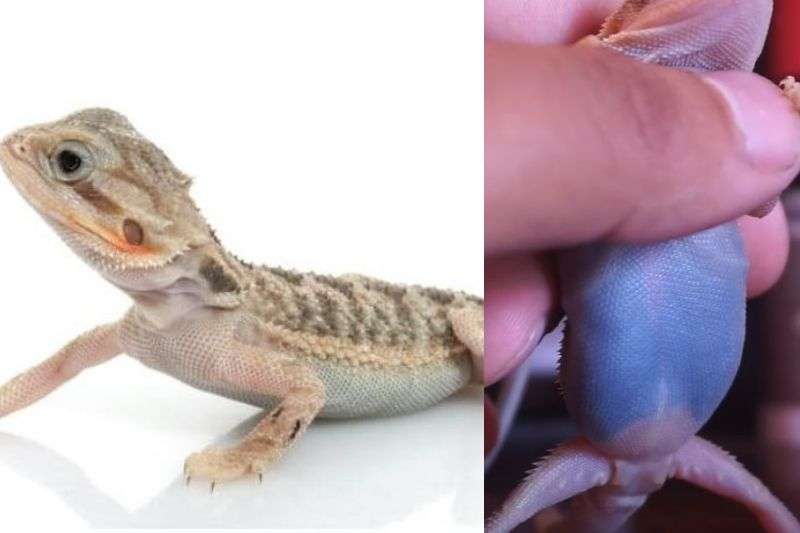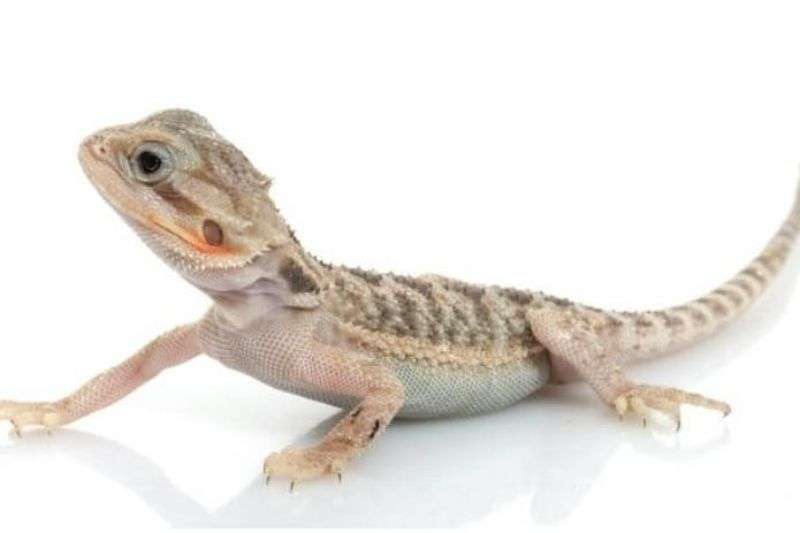Lizards are a popular choice of pets for many reasons. They are not loud, they don’t need constant attention, and they are interesting to look at. There are many types of lizards people choose to keep as pets.
One of those types is the bearded dragon, popular among people and reptile breeders for its numerous color morphs and patterns. The Blue Bearded Dragon (Pogona vitticeps) is particularly coveted for its beautiful blue sheen.
The blue bearded dragon is actually called Translucent Bearded Dragon, a color morph of the bearded dragon. As their name implies, they have translucent scales that come in a lot of colors, including yellow, orange, and green.
The translucent bearded dragon is blue as a juvenile. Usually, only the ventral side of the juvenile lizard is blue, but in many cases, both the back and front have blue tinges. The blue color, however, disappears as it grows mature.
If you’re also planning to have a blue bearded dragon as your pet, this post might help you. In this article, we’ll talk about the identifying features, price, interesting tidbits, and caring instructions for the blue bearded dragon.
Identifying Features (How to Identify)

- As mentioned before, the blue bearded dragon is only blue during its juvenile period. So, if you’re looking for your pet bearded dragon to be particularly blue, make sure to buy a baby reptile.
- The scales and spikes of the blue bearded dragon are translucent, giving them a lighter color than other morphs of the lizards.
- In baby blue bearded dragons, the abdomen is blue. Sometimes, even the back has a blue hue. The adults can be of many colors but do not have blue in them.
- The eyes of the reptile are black or very dark, making it hard to notice the irises, and have blue eyelids.
To know more in detail:
Price
The price of a blue or translucent bearded dragon is somewhere around $100 – $450. The price can differ based on your location, the taxes, and the seller. The price is less for the common bearded dragon, which is either brown or tan. Its price starts at around $40.
You can find other color morphs of the bearded dragon, like red, orange, leatherback, and hypomelanistic, for a price ranging from $50 – $900.
The most expensive color morph of the blue bearded dragon is the Zero morph, i.e., snow white or pure white, and costs around $900.
Note: The prices we mentioned here are based on online sales shown on Google. We’re not reptile breeders, and these prices are not from us. This post is for educational purposes.
How to Take Care of Blue Bearded Dragon
Blue Bearded Dragons are mild-tempered animals and do not need excessive attention and care. Because of this, they are great pets for beginners.
To properly care for your pet blue bearded dragon, we’ll need to make sure you give them enough space and proper habitat as well as appropriate food and healthcare. With proper care, a blue bearded dragon will live up to 10 – 15 years.
Habitat
- For a blue bearded dragon, the tank needs to be at least 4 feet x 2 feet x 2 feet. With that, it will have enough space to rest and roam around.
- The lizard spends a lot of time on grass beds, but it also likes to climb trees. It perches on open branches of trees and in bushes. So, designing the tank like that will be necessary.
- For the substrate, tiles, slate, and paper are preferable. Sand is also another option, as these lizards love to play in the sand. But it is a bad idea for babies and juveniles since they tend to eat the sand, which causes indigestion and other problems.
- Blue bearded dragons also love to bask in the sun, but they will look for shade if the temperature is too high. So keep the tank somewhere; your pet will get enough sunlight but won’t get too hot. During the day, keeping the temperature between 75 – 85 degrees Fahrenheit is necessary.
- At night, it should be around 70 – 75 degrees Fahrenheit. When the lizard is basking in the sunlight, the temperature needs to be from 88 – 100 degrees Fahrenheit to maintain the normal body temperature.
Feeding
- Providing the right kind of food for your pet is very important. The diet pattern of the blue-bearded lizard differs from childhood to maturity. Adult lizards prefer more vegetables in their diet, as well as fruits. For protein intake, they like to eat gut-loaded insects.
- The diet of juvenile blue bearded lizards is more protein oriented. They should eat as much protein as they eat vegetables. So, balance these components in their diet. As they grow older, their diet should also change to more vegetables and less protein.
Health
A problem a lot of pet owners face is health-related. Pets cannot verbally let us know what is ailing them, nor can they specify what hurts.
More common pets like dogs and cats have their little ways of letting their owners know their discomfort, but it’s not the same for lizards. You need to keep a close eye on your pet reptile to know if a health-related problem arises.
- For blue bearded dragons and every other bearded dragon morph, the most dangerous health hazard is the Agamid Adenovirus. It affects the immune system of these lizards badly, which leads to them being more susceptible to other diseases that can even cause death. But thankfully, it is not that common and has less chance of happening.
- The more common health-related problems your blue bearded lizard can face are mouth rot, difficulties in shedding, parasitic infections, respiratory problems, etc. In any of these cases, don’t be late to take your pet to a reptile specialist veterinarian.
- Another disease blue bearded dragon suffers from is Metabolic Bone Disease which is caused by calcium deficiency. If that’s the issue, include more calcium-rich vegetables in its diet and give it calcium supplements.
Interesting Facts of Blue Bearded Dragon
- Bearded dragons display temperature-induced sex reversal. Meaning the eggs or larva of these lizards turn from males to females depending on the temperature.
- Bearded dragons are intelligent creatures. They can learn specific behaviors by watching them in action.
- Bearded dragons communicate with each other by head-bobbing and posturing. Sometimes, they use their coloration to show dominance.
- Bearded dragons have a distinct hierarchy among them. Favored things, like the sunniest basking spots, will go to the strongest ones.
Blue bearded dragons are beautiful creatures and if that’s the image of a pet you have in mind, go for it. But remember, the blue is only temporary and will fade as it grows.
But still, the translucent bearded dragons have gorgeous colors even without the blue.
According to IUCN, Blue bearded dragons are currently listed under Least Concern, but like many expensive reptiles, they are also protected by various wildlife conservation laws.
That’s why these lizards are very costly. Also, even purchasing blue bearded dragons to keep them as pets, essential documents are required.
In a nutshell, blue bearded dragons are very beautiful and unique lizards that are popular as pets due to their translucent light blue pattern, docile nature, and striking appearance.
Proper care, including providing a suitable enclosure, diet, and environmental conditions, is crucial to their health and well-being in captivity.
We hope this post helped you with your pet blue bearded lizard. If you’re a reptile enthusiast, you can check out our other articles.
References:
- Translucent Bearded Dragon: Facts, Pictures, Info & Care Guide by Petkeen
- Wikipedia
Also Read:
Anamika has a fascination with all living things. Being a Zoology student, she loves to know new interesting things about animals. She’s also a very keen fan of manga and anime. Writing is her passion, and writing about her favorite things is her boost of serotonin.
